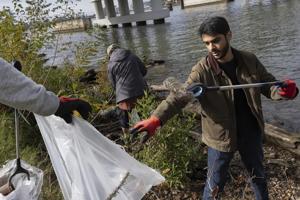WASHINGTON (AP) — Bruce Holmes, 65, grew up fishing on the Anacostia River, a 9-mile (14-kilometer) urban waterway that flows through Washington, D.C. and parts of Maryland, and has long been defined by pollution and neglect.
Back then, Holmes would keep what he caught with his family — usually carp or catfish — and take it home to fry. It was the 1970’s, and he didn’t know how contaminated the water was. “There wasn’t no throwing it back in,” Holmes said, “Whatever we caught we ate.

Or we sold.” Now, decades later, Holmes no longer eats what he catches from the Anacostia as he’s learned more about the river, but teaches adults and children in the capital how to fish as the river undergoes something of a comeback. He hopes the fishing lessons double as a clarion call to help clean up and maintain the river he grew up around.
Sometimes called D.C.‘s “forgotten river,” the Anacostia River is shorter, shallower and harder to navigate than the more famous Potomac, which cuts through the city’s storied landmarks and is steeped in Revolutionary and American Civil War history.
For decades, the Anacostia was treated as a municipal dumping ground for industrial waste, storm sewers and trash. That contamination largely affected the communities of color that the river intersects. In recent years, things have started to improve, but change has come slowly.
INFRASTRUCTURE UPGRADES It’s still illegal to swim in the Anacostia because of E. coli levels that te.























